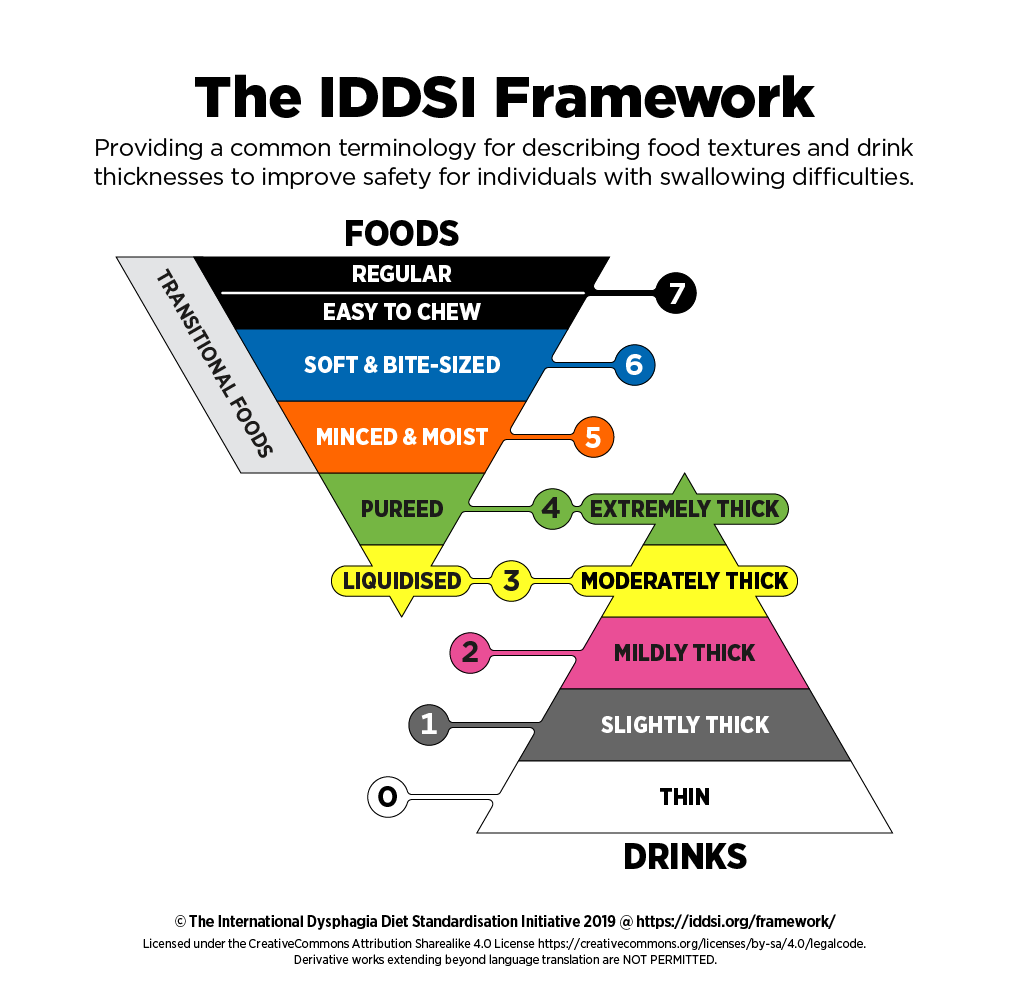When your favorite team loses, it’s hard to take. When someone gives a wild excuse for being late, there’s frustration. We call such instances hard to swallow. For people living with dysphagia, hard to swallow is more than just a figure of speech. Swallowing can be dangerous, especially when it comes to consuming foods and beverages most of us take for granted.
When food and drink are difficult to swallow, it’s important for people to consume food that has the right texture. The International Dysphagia Diet Standardization Initiative (IDDSI) is a set of guidelines to help ensure the safety of those who have dysphagia. IDDSI is a global initiative to standardize diets for people with swallowing disorders. IDDSI has the support of the Academy of Nutrition and Dietetics (AND) and the American Speech Language Hearing Association (ASHA).
Why is the Initiative Important?
The consistent application the standard seeks to achieve is critical to care in the 21st century, Fillmore says. As people move from one care center to another more frequently, it’s vital that people with dysphagia are provided the consistency of food and beverage that’s best for them.
“What’s considered honey consistency to one might be syrup to another,” she says. “These are very non-standard and interchangeable terms in a place where the thickness and texture of the liquid or food is so important to the patient’s health. We need consistency.”
The IDDSI diet standards approach thickened liquids and solids with descriptions, not textures related to common products such as syrup, honey, or nectar. There are different levels of thickness and texture that cover liquid and solid foods.

New Standards Define & Measure Texture
The testing methods are key to the IDDSI, not only telling caregivers how thick products are supposed to be, it’s offering practical ways to check liquid or food thickness.
“Instead of looking at something and saying, ‘Yep, that looks about the same as honey,’ now there’s a test that provides consistency,” Fillmore says. “They only take a second or two each time you prepare a product.”
There may be adjustments as the IDDSI standards are implemented, Fillmore notes. One thing, however, is certain: the IDDSI common terminology and testing standards will improve safety for people with any level of dysphagia.
Additional Information
Please send any feedback about this article to nrc@gfs.com and learn more about our nutrition resources here.
Visit iddsi.org to learn more about the framework and support to incorporate the standards in your organization.
Note: The IDDSI Framework and Descriptors are licensed under the CreativeCommons Attribution Sharealike 4.0 Licence.
Attribution is requested as follows: (c) The International Dysphagia Diet Standardisation Initiative 2016. Attribution is NOT PERMITTED for derivative works incorporating any alterations to the IDDSI Framework that extend beyond language translation.
Supplementary Notice: Modification of the diagrams or descriptors within the IDDSI Framework is DISCOURAGED and NOT RECOMMENDED. Alterations to elements of the IDDSI framework may lead to confusion and errors in diet texture or drink selection for patients with dysphagia. Such errors have previously been associated with adverse events including choking and death.




























